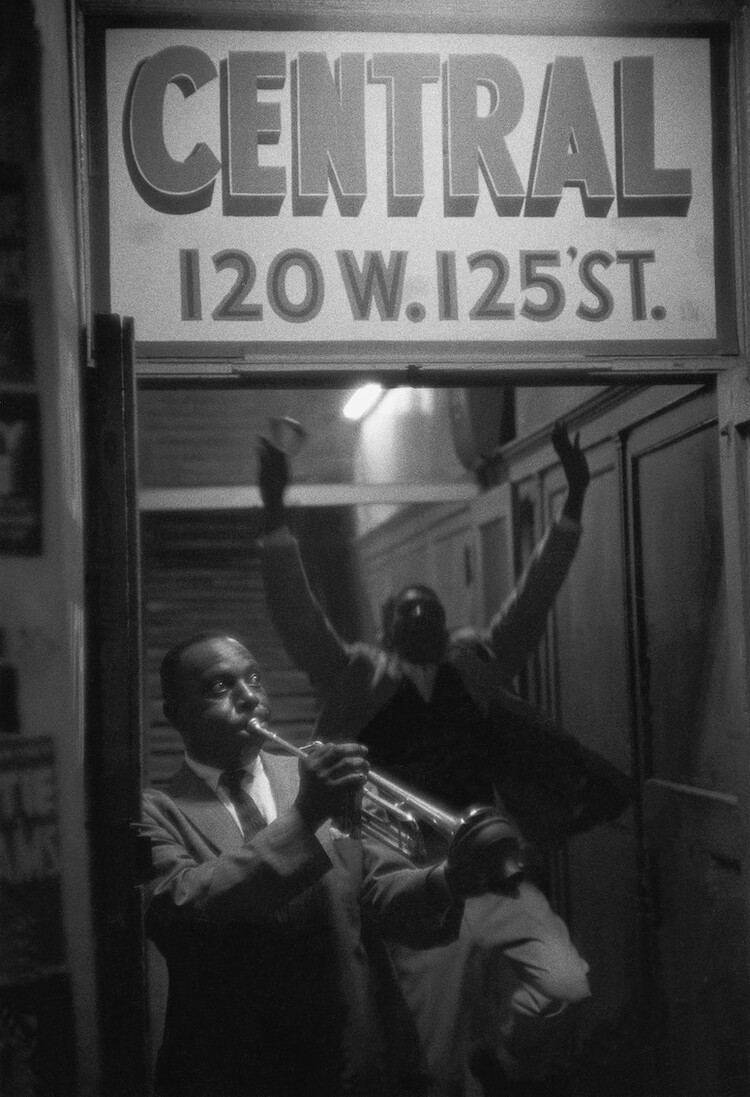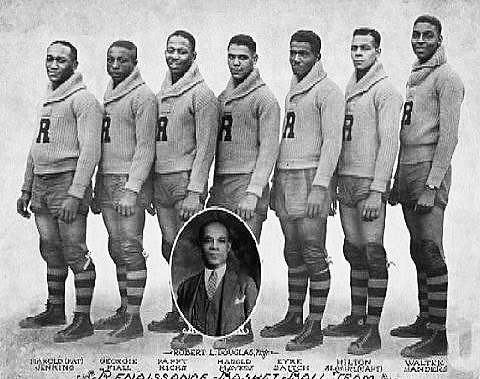You are using an out of date browser. It may not display this or other websites correctly.
You should upgrade or use an alternative browser.
You should upgrade or use an alternative browser.
African American History aka Black History & History of Afrikans World Wide
- Thread starter Lexx Diamond
- Start date
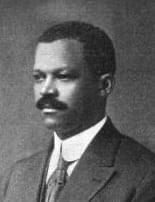

NORTH CAROLINA'S FIRST LICENSED AFRICAN ARCHITECT LIVED AT 1712 FAYETTEVILLE STREET
Gaston Alonzo Edwards was North Carolina's first African registered architect and resided at 1712 Fayetteville Street along with his wife, Ruth Edwards, who would become the chair of the music department at North Carolina Central University. Edwards served many roles during his tenure in Durham including serving as principal of J A Whitted and designing structures on the Shaw University Campus.
According to a biographical sketch of Edwards published in 1917,
“On March 25, 1915, the General Assembly of N. C. passed an act requiring all architects to be examined, licensed and registered. Prof. Edwards not only passed the board successfully but enjoys the distinction of being the only registered Negro architect in North Carolina.” His business cards, as Hazel Edwards notes, highlighted this qualification: “Never build without a plan, consult G. A. Edwards—the only Negro licensed to do business in North Carolina.” Edwards applied for and received his licensing certificate, #54 in the official record book, on July 22, 1915, the only man of color among the initial group of architects whose licenses were granted because they were practicing prior to 1915. According to the 1917 account, “He cares but little for the frills and fads of architecture, but adheres strictly to the three Fs in designing, Fit, Firm and Fair. As a result he enjoys a liberal patronage from the white people as well as from his own race.” Although Edwards designed numerous buildings, including many residences, none has been identified thus far except for the Masonic Building and Tyler Hall."
Although 1712 Fayetteville Street was known as the Rivera House, the Edwards family resided there prior to being occupied by noted photojournalist Alex Rivera and family. The house, a contributing structure in the Fayetteville Street Local Historic District, was demolished although efforts to preserve it fell short.




Assata Shakur, (1987), Assata. An Autobiography, Forewords by Angela Davis and Lennox S. Hinds, Lawrence Hill Books, Chicago, IL, 2001, pp. 253-256

Donald Byrd on the A train
New York City 1959
Photo: Williams Claxton https://href.li/?https://demontphoto.com/jazz-by-william-claxton
The Borana Oromo, also called the Boran, are a pastoralist ethnic group living in southern Ethiopia (Oromia) and northern Kenya. They are a moiety of the Oromo people,the other being the Barentu Oromo.
It is believed that the Borana have developed their own calendar around 300 BC. In Namoratunga archaeoastronomical site in northern Kenya, stone pillars pointing to positions of stars used in Borana calendar were found. Namoratunga II contains 19 basalt pillars, aligned with 7 star systems of the Borana calendar: Triangulum, Pleiades, Bellatrix, Aldebaran, Central Orion,Saiph, and Sirius. It is believed that the Borana used these astronomical observation site to develop the calendar.
A lunar-stellar calendar, the Borana Calendar relies on astronomical observations of the moon in conjunction with seven particular stars or constellations. Borana months (Stars/Lunar Phases) are Bittottessa (Triangulum), Camsa (Pleiades), Bufa (Aldebaran), Waxabajjii (Bellatrix), Obora Gudda (Central Orion-Saiph), Obora Dikka (Sirius), Birra (full moon), Cikawa (gibbous moon), Sadasaa (quarter moon), Abrasa (large crescent), Ammaji (medium crescent), and Gurrandala (small crescent).
There are 27 names of days of a month. Hence, first two or three days are used twice at the beginning and end of a month.
Months can be identified by moon phase in relation to seven stars or star groups. They star groups are Triangulum (called Lami by Borana), Pleiades (called Busan by Borana), Aldebaran (called Bakkalcha by Borana), Bellatrix (called Algajima by Borana), central Orion (called Arb Gaddu by Borana), Saiph (called Urji Walla by Borana), and Sirius (called Basa by Borana) star systems.
The first day of the new year in Borana calendar starts in the month of “Bittootessa” and the day name “Bitta Kara”. This is when Triangulum is in conjunction with the new moon. After that, the calendar simply counts the day names through the month based on that first astronomical observation - conjunction of the new moon at the beta Triangulum position. The next month begins when the new moon is in conjunction with the next star or star system, in this case, Pleiades (a blue star cluster). This occurs 29.5 days after the start of the first month. However, the calendar runs out of day names a couple of days early. This is acceptable since the names of the days that started the month are also the names of the days that finish the month. This is the same for all the months, adjusted for the observations, of course, allowing a variation of a day or two here and there based on the astronomical observation. The third month starts when one spots the new moon rising “in conjunction with” the star Aldebaran. This continues down the list of six Borana star positions for the first six months.
It is believed that the Borana have developed their own calendar around 300 BC. In Namoratunga archaeoastronomical site in northern Kenya, stone pillars pointing to positions of stars used in Borana calendar were found. Namoratunga II contains 19 basalt pillars, aligned with 7 star systems of the Borana calendar: Triangulum, Pleiades, Bellatrix, Aldebaran, Central Orion,Saiph, and Sirius. It is believed that the Borana used these astronomical observation site to develop the calendar.
A lunar-stellar calendar, the Borana Calendar relies on astronomical observations of the moon in conjunction with seven particular stars or constellations. Borana months (Stars/Lunar Phases) are Bittottessa (Triangulum), Camsa (Pleiades), Bufa (Aldebaran), Waxabajjii (Bellatrix), Obora Gudda (Central Orion-Saiph), Obora Dikka (Sirius), Birra (full moon), Cikawa (gibbous moon), Sadasaa (quarter moon), Abrasa (large crescent), Ammaji (medium crescent), and Gurrandala (small crescent).
There are 27 names of days of a month. Hence, first two or three days are used twice at the beginning and end of a month.
Months can be identified by moon phase in relation to seven stars or star groups. They star groups are Triangulum (called Lami by Borana), Pleiades (called Busan by Borana), Aldebaran (called Bakkalcha by Borana), Bellatrix (called Algajima by Borana), central Orion (called Arb Gaddu by Borana), Saiph (called Urji Walla by Borana), and Sirius (called Basa by Borana) star systems.
The first day of the new year in Borana calendar starts in the month of “Bittootessa” and the day name “Bitta Kara”. This is when Triangulum is in conjunction with the new moon. After that, the calendar simply counts the day names through the month based on that first astronomical observation - conjunction of the new moon at the beta Triangulum position. The next month begins when the new moon is in conjunction with the next star or star system, in this case, Pleiades (a blue star cluster). This occurs 29.5 days after the start of the first month. However, the calendar runs out of day names a couple of days early. This is acceptable since the names of the days that started the month are also the names of the days that finish the month. This is the same for all the months, adjusted for the observations, of course, allowing a variation of a day or two here and there based on the astronomical observation. The third month starts when one spots the new moon rising “in conjunction with” the star Aldebaran. This continues down the list of six Borana star positions for the first six months.

Nichelle Nichols
And til this very day, even Macron recently refused to acknowledge what happened and pay reparations for it.


5 ways prisoners were used for profit throughout U.S. history
"American Prison" author Shane Bauer highlights a few key moments in the history of prison-as-profit in America, drawing from research he conducted for the book.
Today, if you were traveling on the MacArthur Causeway to South Beach, right before you make it to 5th Street you will see the exclusive island known as Fisher Island. Fisher Island has the highest per capita income in the United States, and was home to notables such as Oprah Winfrey. To get to the island, you either need to take a ferry, private boat, helicopter, or if you’re crazy, swim three miles. Owning real estate on the island is the ultimate level-up, but did you know…
Fisher Island was purchased in 1918 by black millionaire, Dana Albert Dorsey. In segregated Miami, black people were not allowed on Miami Beach, so Dorsey bought the island to provide a beach for black people.
Who was D. A. Dorsey? | D. A. Dorsey Technical College
 www.dadorseytech.edu
www.dadorseytech.edu
Don Rafael Cepeda – The Patriarch of the Bomba (1910-1996)
By
Tomas Peña
-
Oct 11, 2019
2751
0
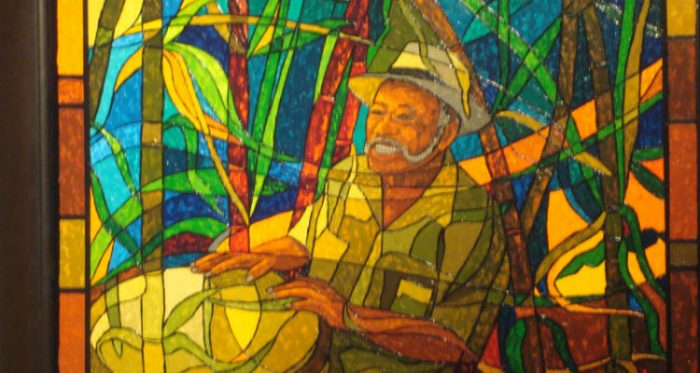
“We always want Puerto Rico’s culture to prevail.” Don Rafael Cepeda
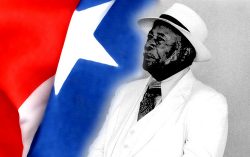
He was born on July 10, 1910, on the Carolina ranch in the Puerta de Tierra neighborhood of San Juan, Puerto Rico, to Leonor Atiles del Valle, a native of San Juan and Modesto Cepeda of Santurce. Or, as Cepeda tells it, he was born while his mother was in the middle of a Bomba dance.
Don Rafael attended primary and secondary studies at the San Agustin College of Puerta de Tierra. Initially, he worked various occupations: baseball, boxing, a maintenance worker, and carpenter, but his calling was the drum and music which he inherited from his great-grandfather Marcelo Cepeda Chavier, his grandfather, Manuel Cepeda, father and wives, who were skilled Bomberos, Pleneros, and Dancers.
In 1932, he married Doña Caridad Brenes, a native of the municipality of Humacao and a dancer and designer of traditional costumes. They established a home in the Melillas de Santurce neighborhood and gave birth to twelve children: Rafael Jr., Orlando, and Luis Daniel – today – deceased. Also, Modesto, Lucia, Carlos, Petra, Mario, Daniel, Roberto, Inocencia, and Jesús. All are exponents of Afro-Puerto Rican music and dedicated their lives to keeping the tradition authentic and alive.
In 1940, Don Cepeda formed the group “Grupo ABC” with several friends and appeared on the radio program, “Tribuna del Arte,” hosted by Rafael Quiñones Vidal.
In 1953, he organized “El Conjunto Trapiche,” which became “La Familia Cepeda.” Also, Cepeda was a member of “The Knights of the Bomba.”
In 1956 Don Rafael participated in Franciso Arrivi’s play “Vejigantes” (by Francisco Arriví). Also, he appeared in various hotels in and around the San Juan areas, including The Normandie, San Gerónimo Hilton, and The Caribe Hilton, among others.
The group also appeared in several films, including “Carnivals of the Caribbean” (1961), “Felicia” (1963), “While Puerto Rico Sleeps (1964), “Experience in Puerto Rico.” A 1965 and “Caña Brava,” with the participation of the Dominican Roxana Bellini and Fernando Casado; the Mexican Javier Solís and Puerto Rican Braulio Castillo. Also, Don Rafael participated in the Manuel Jiménez “Canario” Ensemble (1966).
Don Rafael composed roughly 500-600 compositions, many of which appear on commercial recordings and have attained widespread international popularity. Also, he recorded several albums including “Don Rafael Cepeda Patriarca de la Bomba” and “That’s the Plena.”
In 1973, members of the Cepeda family, which included his children, formed the “Ballet Folklorico de la Familia Cepeda” (The Folkloric Ballet of the Cepeda Family). The group gained international fame and participated in the 1975 film “Mi Aventura en Puerto Rico” (My Adventure in Puerto Rico). Also, the group became a Puerto Rican institution and performed in the United States, South, and Central America, Europe, and Asia There is probably no town in Puerto Rico in which they have not performed their music and dance.
Don Rafael Cepeda transitioned on July 21, 1996, shortly before the Legislature of Puerto Rico assigned him a life pension in recognition of his legacy. His wife Caridad died on February 25, 1994. They are buried in the Cemetery of Villas Palmeras in San Juan.
In recognition of his contributions to Afro-Puerto Rican culture, the Government of Puerto Rico officially named Don Rafael “The Patriarch of the Bomba and Plena.” Also, in 1986, the Institute of Puerto Rican Culture produced the documentary film, “Don Rafael Cepeda: Patriarch of the Bomba y la Plena.”
Among the many awards and recognitions awarded Cepeda are the National Heritage Fellowship Award (1983) from the National Endowment for the Arts of the Smithsonian Institution, and a certificate of recognition from President Ronald Reagan.
Don Rafael Cepeda’s legacy survives through institutions such as the Cultural Folkloric Foundation of Rafael Cepeda. Also, The Rafael Cepeda Festival of Bomba and Plena, sponsored by The Institute of Puerto Rican Culture, celebrated annually in San Juan.
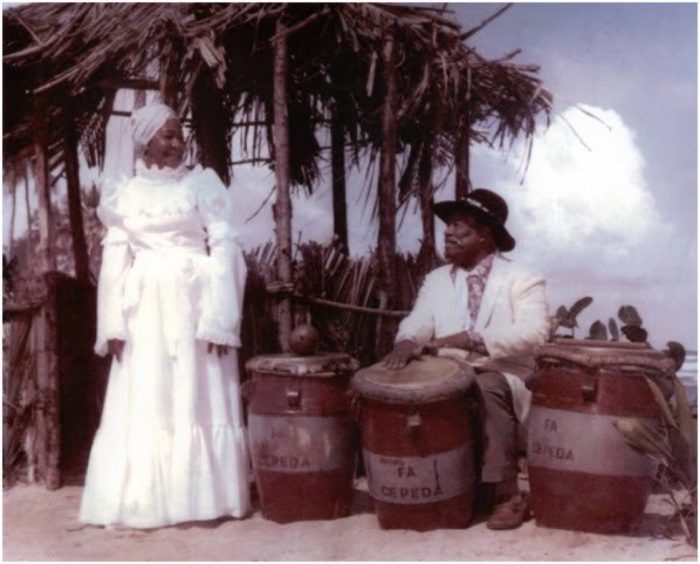
Bomberos and Pleneros: Don Rafael Cepeda, “Patriarch of the Bomba”
RAFAEL CEPEDA ATILES was a prolific musician, composer, leader, ambassador and widely considered the “Patriarch of the Bomba.” He was born on July 10, 1910, on the Carolina ranch in the…
jazzdelapena.com

"Turning my back on Malcolm was one of the mistakes that I regret most in my life. I wish I'd been able to tell Malcolm I was sorry, that he was right about so many things. But he was killed before I got the chance. He was a visionary ahead of us all. Malcolm was the first to discover the truth, that color doesn't make you a devil. It is the heart, soul, and mind that define a person. Malcolm was a great thinker and an even greater friend. I might never have become a Muslim if it hadn't been for Malcolm. If I could go back and do it over again, I would never have turned my back on him." —
Dr. King brilliantly explains the additional and cruel obstacles forced upon Black Americans versus the many opportunities are afforded to white European immigrants.
The University of Alabama is renaming a building after its first Black student, removing the name of a Klansman
By Christina Zdanowicz, CNN
Updated 7:20 PM ET, Fri February 11, 2022
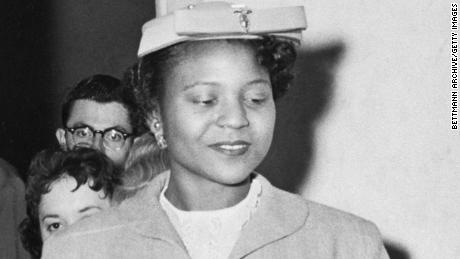
In 1956, Autherine Lucy became the first Black student to enroll in the University of Alabama at Tuscaloosa in its 136-year history.
(CNN)After a week of backlash, the University of Alabama System's Board of Trustees voted Friday to name a building after the school's first Black student instead of having her share the name with a Ku Klux Klan leader.
The trustees reversed a February 3 decision to name the building Lucy-Graves Hall after its first Black student and civil rights activist Autherine Lucy Foster and Bibb Graves, a former Alabama governor and a Ku Klux Klan leader.
Students, faculty and community members cried out, saying it was wrong to recognize the legacy of these two people in one building.

Alabama removed its first black college student because of riots. 63 years later, she's being honored
"This has been a challenging time. The work group in making its recommendations certainly intended for that paired name to generate educational moments that can help us learn from our complex and rich history," trustee emeritus Judge John England Jr. said at the special called Friday meeting.
"Somehow, the honoring of Autherine Lucy Foster sort of took the background and that's not what we wanted," England said. "We've heard enough from people whose opinion matter to us -- students, faculty, staff -- that we can do that in a better way than what we've done."
The working group for the board consulted with more than a dozen Alabama history scholars before suggesting the name of Lucy-Graves Hall, the university system said in a news release. However, students and others on campus were not consulted.
The board's priority was to honor Foster, the release said. "Unfortunately, the complex legacy of Governor Graves has distracted from that important priority," it read.

The formerly named Bibb Graves Hall as seen the University of Alabama campus on Feb. 10.
Foster, whose last name was then Lucy, became the first Black student to enroll at the university in 1956. On her third day on campus, on February 6, 1956, a violent mob surrounded Graves Hall, according to the board resolution.
She took shelter in the School of Education Library after university officials helped her escape. The board of trustees then suspended and expelled her.
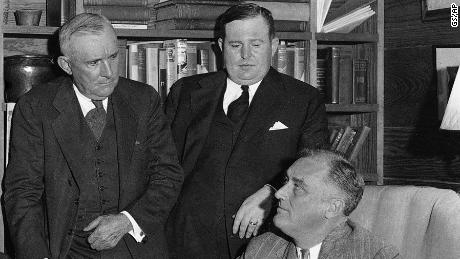
Alabama State to rename a residence hall that had honored a former governor -- a one-time KKK leader
Decades later, Foster enrolled at the university's College of Education in 1989 and earned her master's degree in education in 1991.
The civil rights activist and education leader had an endowed scholarship named after her by the university, which is given to a Black undergraduate student yearly. A clock tower was dedicated to her in 2010. In 2019, Foster received an honorary doctorate from the University of Alabama.
A sign outside the building has been updated to say Autherine Lucy Hall, according to Lynn Cole, the director of system communications.
The name change on the limestone building should be done in a couple weeks, she added.
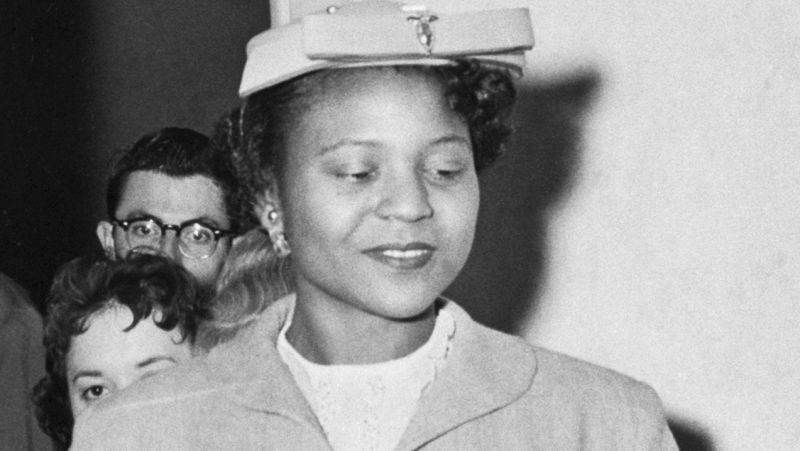
 www.cnn.com
www.cnn.com
By Christina Zdanowicz, CNN
Updated 7:20 PM ET, Fri February 11, 2022

In 1956, Autherine Lucy became the first Black student to enroll in the University of Alabama at Tuscaloosa in its 136-year history.
(CNN)After a week of backlash, the University of Alabama System's Board of Trustees voted Friday to name a building after the school's first Black student instead of having her share the name with a Ku Klux Klan leader.
The trustees reversed a February 3 decision to name the building Lucy-Graves Hall after its first Black student and civil rights activist Autherine Lucy Foster and Bibb Graves, a former Alabama governor and a Ku Klux Klan leader.
Students, faculty and community members cried out, saying it was wrong to recognize the legacy of these two people in one building.

Alabama removed its first black college student because of riots. 63 years later, she's being honored
"This has been a challenging time. The work group in making its recommendations certainly intended for that paired name to generate educational moments that can help us learn from our complex and rich history," trustee emeritus Judge John England Jr. said at the special called Friday meeting.
"Somehow, the honoring of Autherine Lucy Foster sort of took the background and that's not what we wanted," England said. "We've heard enough from people whose opinion matter to us -- students, faculty, staff -- that we can do that in a better way than what we've done."
The working group for the board consulted with more than a dozen Alabama history scholars before suggesting the name of Lucy-Graves Hall, the university system said in a news release. However, students and others on campus were not consulted.
The board's priority was to honor Foster, the release said. "Unfortunately, the complex legacy of Governor Graves has distracted from that important priority," it read.

The formerly named Bibb Graves Hall as seen the University of Alabama campus on Feb. 10.
Foster, whose last name was then Lucy, became the first Black student to enroll at the university in 1956. On her third day on campus, on February 6, 1956, a violent mob surrounded Graves Hall, according to the board resolution.
She took shelter in the School of Education Library after university officials helped her escape. The board of trustees then suspended and expelled her.

Alabama State to rename a residence hall that had honored a former governor -- a one-time KKK leader
Decades later, Foster enrolled at the university's College of Education in 1989 and earned her master's degree in education in 1991.
The civil rights activist and education leader had an endowed scholarship named after her by the university, which is given to a Black undergraduate student yearly. A clock tower was dedicated to her in 2010. In 2019, Foster received an honorary doctorate from the University of Alabama.
A sign outside the building has been updated to say Autherine Lucy Hall, according to Lynn Cole, the director of system communications.
The name change on the limestone building should be done in a couple weeks, she added.

The University of Alabama is renaming a building after its first Black student, removing the name of a Klansman | CNN
After a week of backlash, the University of Alabama System's Board of Trustees voted Friday to name a building after the school's first Black student instead of having her share the name with a Ku Klux Klan leader.
Never forget hero David Isom, 19. He broke the color line in a Florida segregated public pool on June 8, 1958, which resulted in officials closing the facility.
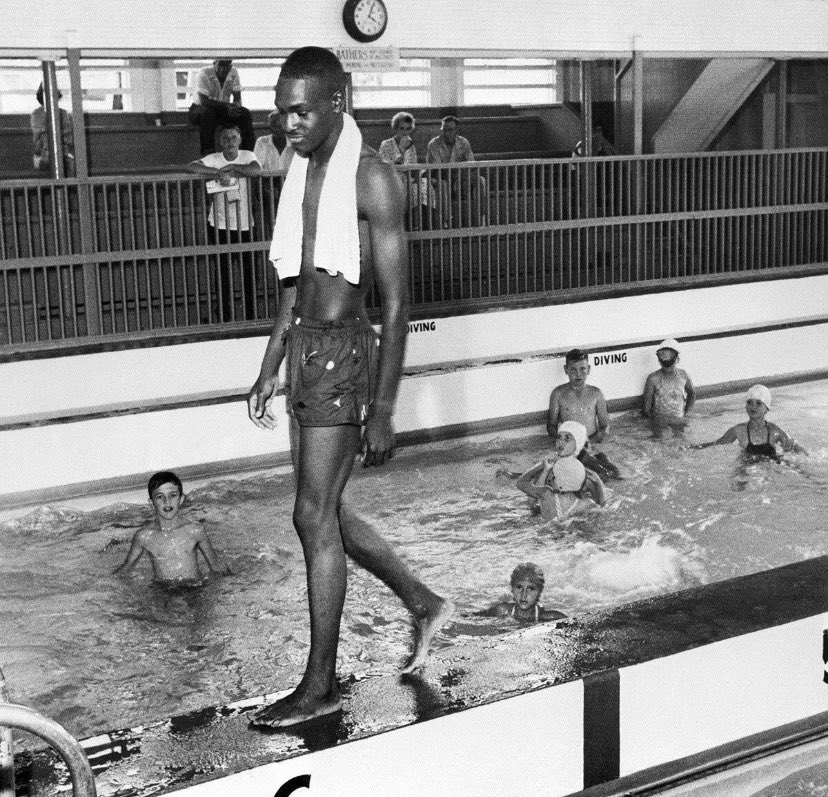
David Isom the 19 year old who broke the colour line - Museum Facts
Guess what happened when David Isom, a boy of colour, broke the colour line in a segregated pool in Florida? Keep reading to know!
 www.museumfacts.co.uk
www.museumfacts.co.uk
Today In History
On February 13, 1923, the New York Renaissance, the first all-Black professional basketball team, is organized. The Renaissance, commonly called the Rens, become one of the dominant teams of the 1920s and 1930s.
The team’s founder was Robert L. Douglas, whose primary objective was to give New York City’s male, Black athletes opportunities to better themselves. In February 1923, Douglas struck an agreement with William Roach, a Harlem-based real estate developer who owned the New Renaissance Ballroom and Casino, and the Rens were born.
With Black players barred from professional basketball leagues, the Rens barnstormed throughout the country, often competing against all-white teams.
Along with owning the team, Douglas coached it from its inception through its last game in 1949. Douglas was inducted into the Naismith Memorial Basketball Hall of Fame as a contributor in 1972. One of the greatest players in the sport’s history recognized his impact.
CARTER™️ Magazine carter-mag.com #wherehistoryandhiphopmeet #historyandhiphop365 #cartermagazine #carter #therenaissance #therens #basketball #blackhistorymonth #blackhistory #history #staywoke
Login • Instagram
Welcome back to Instagram. Sign in to check out what your friends, family & interests have been capturing & sharing around the world.
 www.instagram.com
www.instagram.com






